14 Off-The-Radar Adventure Places + 6 That Stun Beyond Words
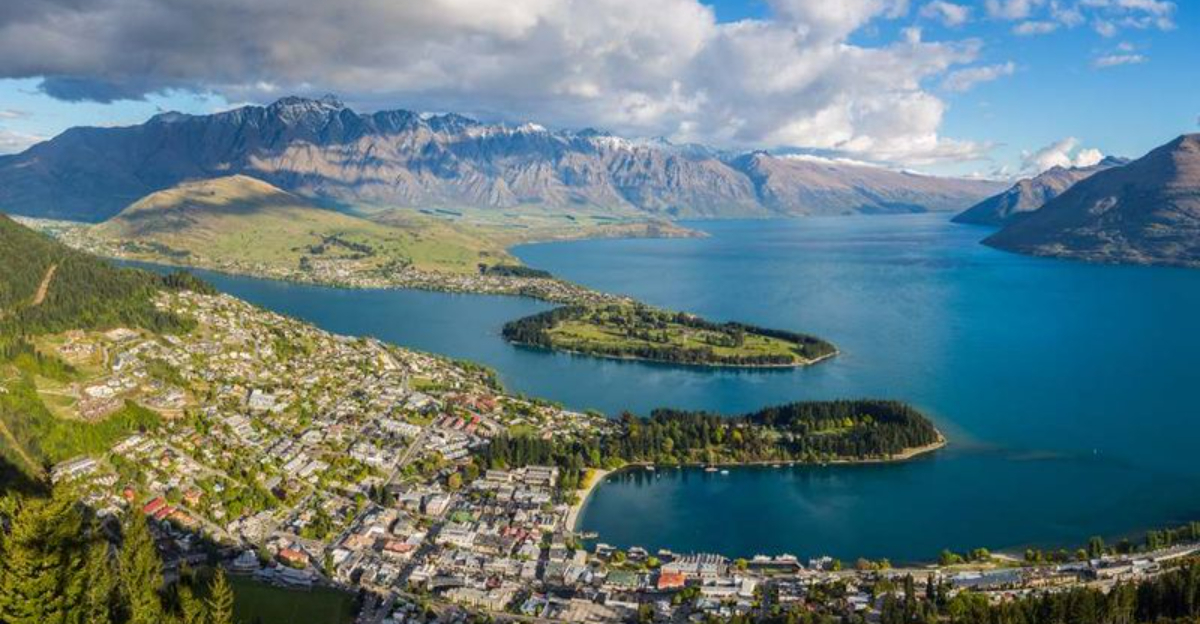
Tired of the same old Instagram-famous destinations? Sometimes the most life-changing journeys happen far from the usual tourist trails.
I’ve always believed that true adventure begins where the crowds end. That’s why I’ve pulled together 20 of the world’s most remote and awe-inspiring places—hidden gems that feel like they’re pulled from another world.
Think deserted volcanic islands, untouched mountain valleys, and surreal landscapes that few travelers ever lay eyes on. Curious to find out where the real magic lies? These off-the-beaten-path spots are calling your name. Which one would you dare to explore first?
1. Svalbard, Norway: Arctic Wilderness Playground
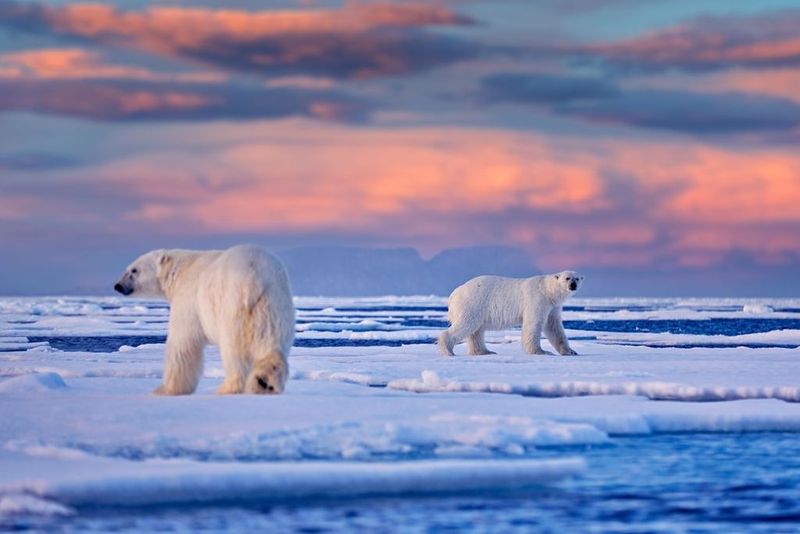
Floating in the Arctic Ocean between Norway and the North Pole, Svalbard offers adventures straight from a polar explorer’s dreams. Witness massive glaciers calving into the sea while polar bears patrol ice floes in the distance.
Summer brings the midnight sun, perfect for kayaking between icebergs or hiking across tundra carpeted with tiny, colorful flowers. Winter transforms the archipelago into a snow-covered wonderland where northern lights dance across star-filled skies.
Though remote, comfortable accommodations in Longyearbyen make this Arctic wilderness surprisingly accessible for the adventurous traveler seeking pristine nature.
2. Socotra, Yemen: Earth’s Most Alien Landscape
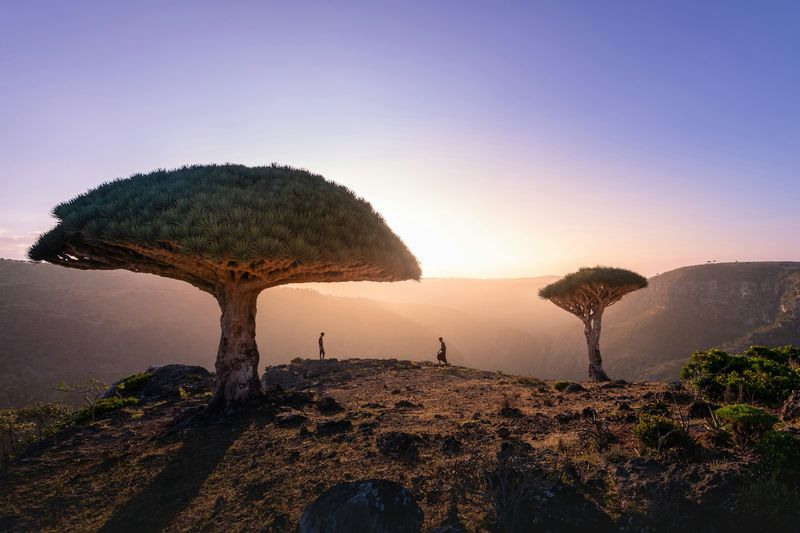
Isolated in the Arabian Sea, Socotra evolved in splendid isolation for millions of years, creating landscapes that feel more science fiction than reality. Dragon’s blood trees spread their umbrella-shaped crowns against clear blue skies, their bizarre forms unlike anything else on Earth.
Bottle trees with bulbous trunks and desert roses that look like bonsai sculptures dot the otherworldly terrain. Nearly a third of all plant life here exists nowhere else on the planet.
Despite political challenges on the mainland, Socotra remains a peaceful haven where travelers can hike among endemic species, swim in crystal waters, and camp beneath stars in perfect solitude.
3. Raja Ampat, Indonesia: Underwater Paradise Untouched
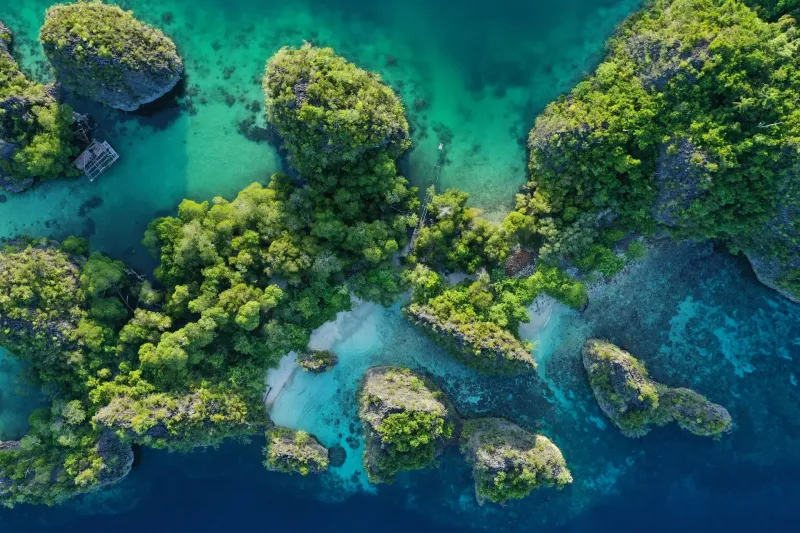
Hidden among 1,500 small islands in Indonesia’s West Papua province lies the planet’s most diverse marine ecosystem. Raja Ampat’s waters shimmer with more than 1,600 fish species and 75% of known coral types, creating an underwater kaleidoscope for divers and snorkelers.
Limestone karsts covered in lush jungle rise dramatically from turquoise lagoons, while hidden beaches wait to be discovered by kayak. Local villages welcome visitors with genuine warmth, offering glimpses into traditional Papuan life.
Eco-resorts built on stilts over crystal waters provide perfect bases for exploring this marine wonderland where manta rays, wobbegong sharks, and tiny pygmy seahorses all find sanctuary.
4. Kamchatka Peninsula, Russia: Land of Fire and Ice
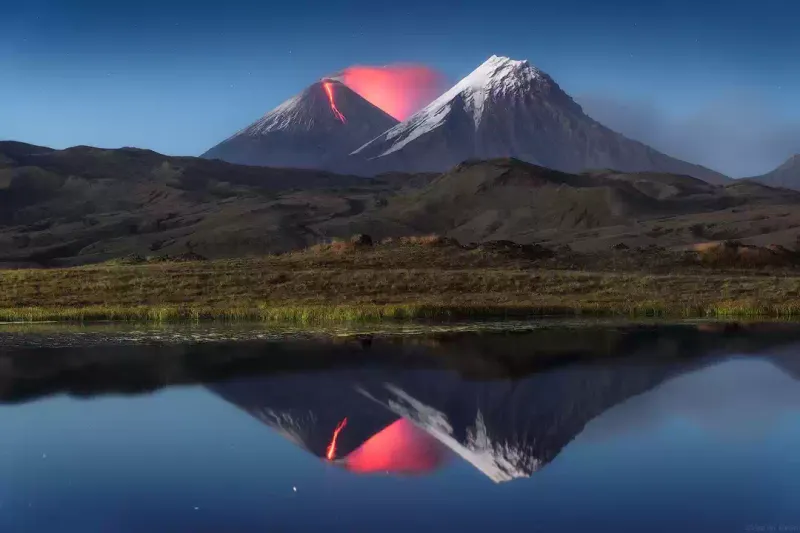
Stretching into the Pacific Ocean at Russia’s eastern edge, Kamchatka boasts one of Earth’s most active volcanic landscapes. Over 300 volcanoes – 29 still active – create a surreal backdrop where steaming geysers burst from snowy valleys and brown bears fish for salmon in pristine rivers.
Helicopter tours reveal crater lakes glowing with impossible blues and greens. Adventurous travelers can ski down volcanic slopes in winter or hike through fields of wildflowers in summer, soaking in natural hot springs after each day’s exploration.
Though reaching this remote wilderness requires effort, rewards include witnessing nature at its most primordial, far from crowds in a landscape few outsiders ever experience.
5. Aysén Region, Chile: Patagonia’s Secret Frontier
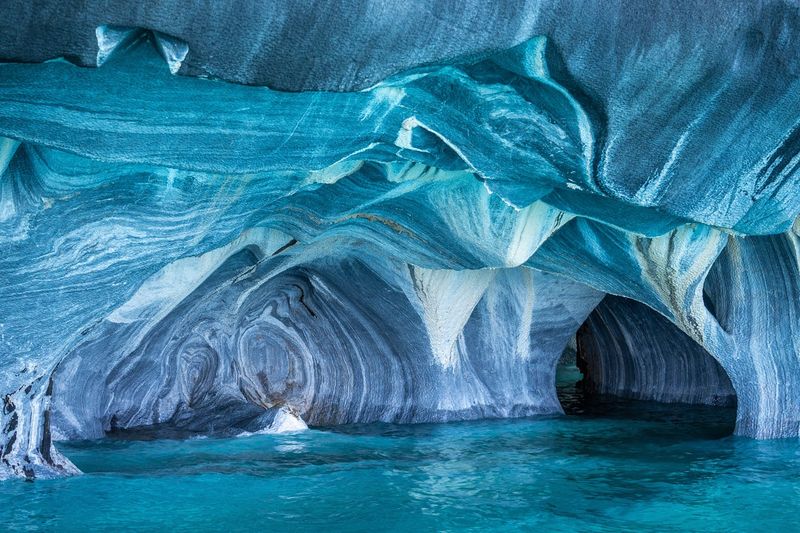
Where the Northern Patagonian Ice Field meets temperate rainforests and turquoise rivers, Aysén remains Chile’s least populated region and greatest wilderness treasure. Marble caves swirl with blue patterns as glacial waters lap against their polished walls.
The Carretera Austral, a rugged highway cutting through this remote terrain, leads adventurers past hanging glaciers and through ancient forests where huemul deer still roam. Local gauchos welcome travelers to traditional estancias where the art of Patagonian horsemanship continues unchanged.
Kayakers paddle through fjords where dolphins play, while hikers discover valleys so remote they might be the first humans to leave footprints there in years.
6. The Azores, Portugal: Atlantic Volcanic Wonderland
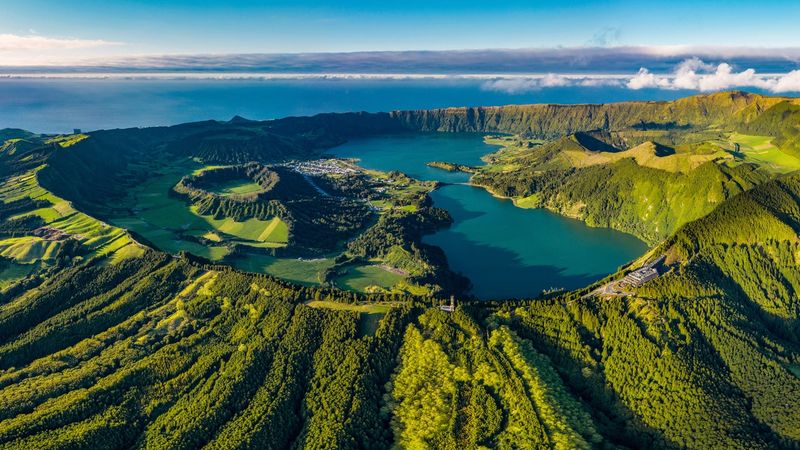
Rising from the mid-Atlantic ridge, these nine volcanic islands blend European charm with raw natural beauty few travelers ever witness. Crater lakes in perfect blue circles dot São Miguel, the largest island, while hydrangeas line country roads leading to black sand beaches.
Whale watching here ranks among the world’s best, with sperm whales and several dolphin species calling these waters home. Thermal pools heated by volcanic activity offer natural spa experiences after days spent hiking past waterfalls or exploring lava tube caves.
Despite being just a four-hour flight from Boston, the Azores maintain their unspoiled character, where farmers still use hot springs to cook traditional cozido stews underground.
7. Tavan Bogd, Mongolia: Nomadic Routes Through Sacred Peaks
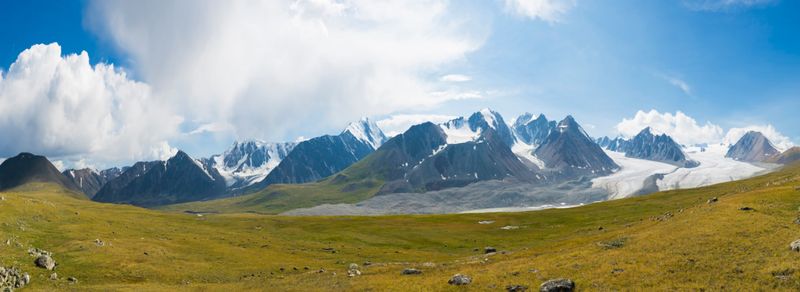
Where Mongolia, Russia, and China meet, five sacred mountains form Tavan Bogd, a wilderness of snow-capped peaks, glaciers, and alpine lakes rarely seen by outside eyes. Golden eagles soar above valleys where Kazakh and Tuvan nomads still herd livestock as their ancestors did for centuries.
Horseback treks lead through wildflower meadows to ancient petroglyphs etched by early inhabitants. Travelers can stay in traditional ger tents with nomadic families, sharing fermented mare’s milk and learning throat singing under star-filled skies.
This remote corner of Mongolia offers a living connection to Central Asia’s nomadic past, where hospitality remains sacred and landscapes stay untouched by modern development.
8. Faroe Islands, Denmark: North Atlantic’s Hidden Gem
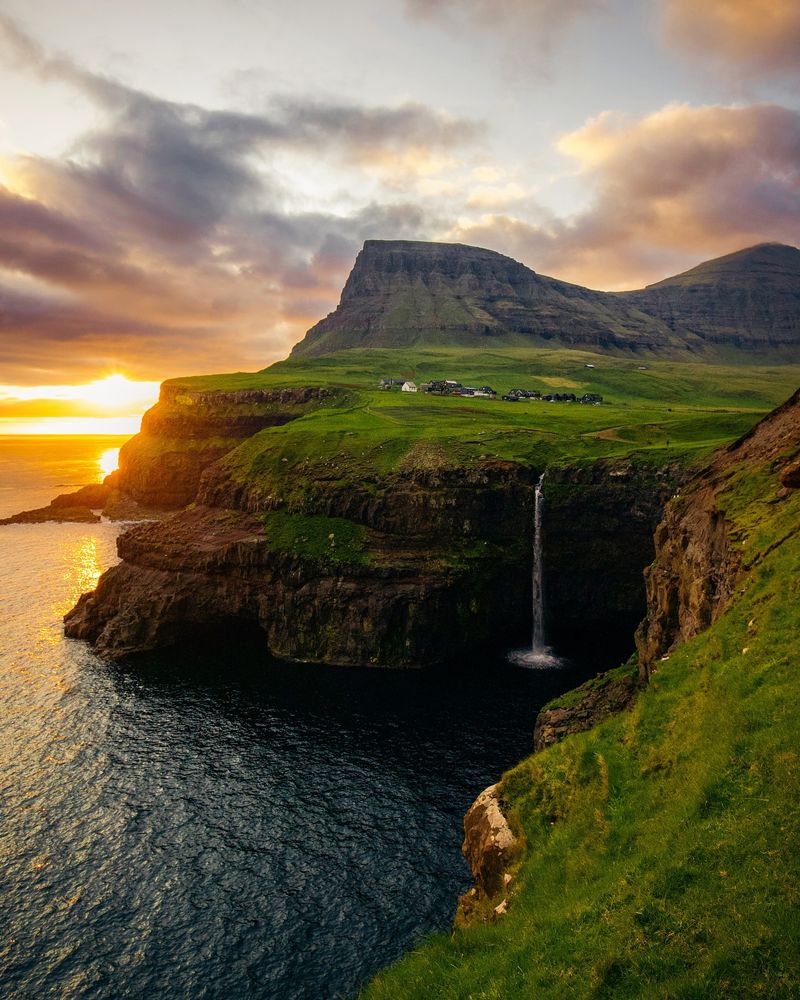
Halfway between Iceland and Norway, these 18 volcanic islands rise dramatically from the North Atlantic, their green cliffs dropping hundreds of feet into churning seas. Grass-roofed houses in tiny villages seem to grow from the landscape itself, while puffins nest on precipitous ledges above.
Hiking trails lead across ridges where sheep graze precariously, offering views of neighboring islands through ever-changing weather. Waterfalls plunge directly into the ocean at spots like Múlafossur, creating scenes straight from Norse mythology.
Though technically part of Denmark, Faroese culture remains distinctly its own, with ancient ballads still sung during chain dances and traditional foods like wind-dried lamb connecting modern islanders to their Viking past.
9. Patagonia, Argentina: Where Earth Meets Heaven (stuns beyond words)
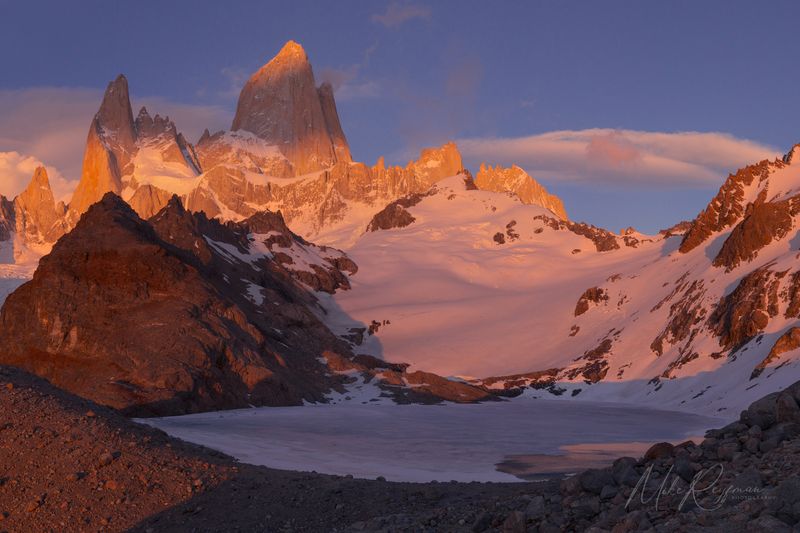
Words falter when describing the raw power of Argentina’s Patagonian wilderness, where jagged mountains thrust skyward from endless steppes. Mount Fitz Roy’s spire catches first light in fiery alpenglow while massive ice fields – the largest outside polar regions – feed azure lakes and rivers.
Hiking through beech forests suddenly opens to views that physically stop visitors in their tracks. The famous Perito Moreno Glacier advances daily in a spectacle of crashing ice, one of few glaciers still growing despite climate change.
Patagonian weather creates its own drama, with clouds racing across peaks and sudden rainbows appearing over landscapes that have remained wild despite centuries of exploration. This is nature at its most untamed and magnificent.
10. Simien Mountains, Ethiopia: Africa’s Grand Canyon
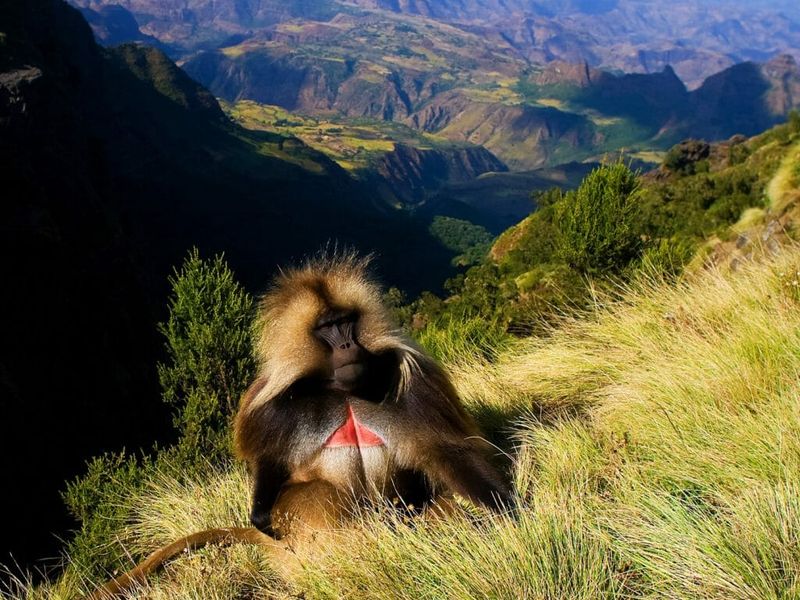
Jagged peaks and deep valleys carve Ethiopia’s northern highlands into one of Africa’s most spectacular landscapes, home to creatures found nowhere else on Earth. Gelada baboons with lion-like manes graze on high plateaus, while rare Walia ibex cling to impossible cliffs.
Traditional villages dot escarpments where farmers grow barley at elevations that would challenge mountaineers elsewhere. Trekking routes connect ancient pathways between communities, offering glimpses into Ethiopia’s rich cultural tapestry against breathtaking backdrops.
Though just a day’s drive from historic Gondar, these mountains remain a wilderness where Ethiopian wolves still hunt rodents in high-altitude meadows and lammergeier vultures soar on thermals rising from canyons thousands of feet deep.
11. Lofoten Islands, Norway: Arctic Circle Masterpiece
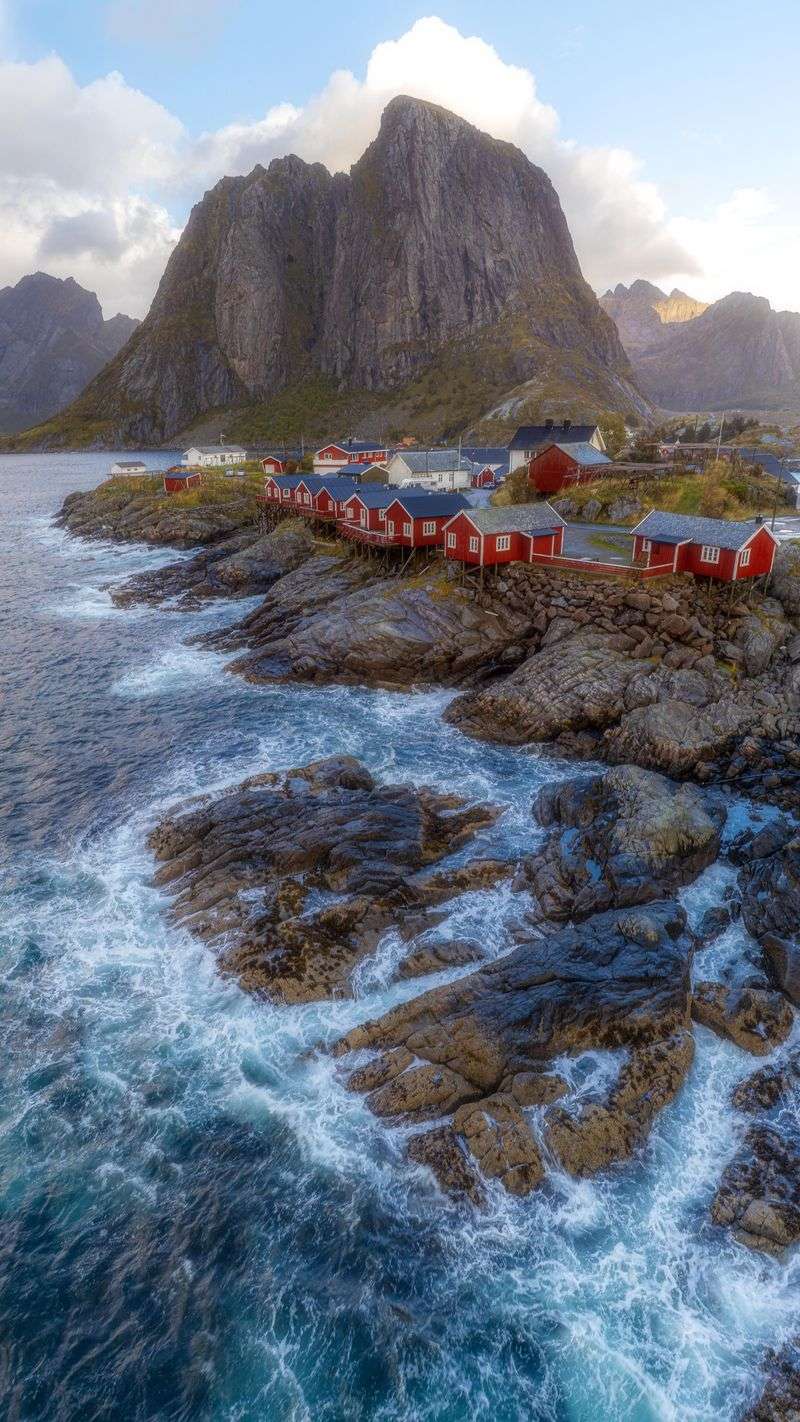
Sharp granite peaks thrust directly from frigid Arctic waters, creating Norway’s most dramatic coastal landscape. Traditional red fishing cabins (rorbuer) perch on stilts above crystal clear waters where cod have been harvested for over 1,000 years.
Summer brings the midnight sun, illuminating beaches with sand white enough to rival the Caribbean against a backdrop of snow-streaked mountains. Winter transforms the archipelago into a wonderland where northern lights reflect in tranquil fjords while locals still practice traditional fishing methods.
Hikers discover hidden coves and panoramic viewpoints, while surfers brave Arctic waters for perfect waves in surroundings so beautiful they seem unreal – all within the Arctic Circle yet warmed by Gulf Stream currents.
12. Banff National Park, Canada: Rocky Mountain Perfection (stuns beyond words)
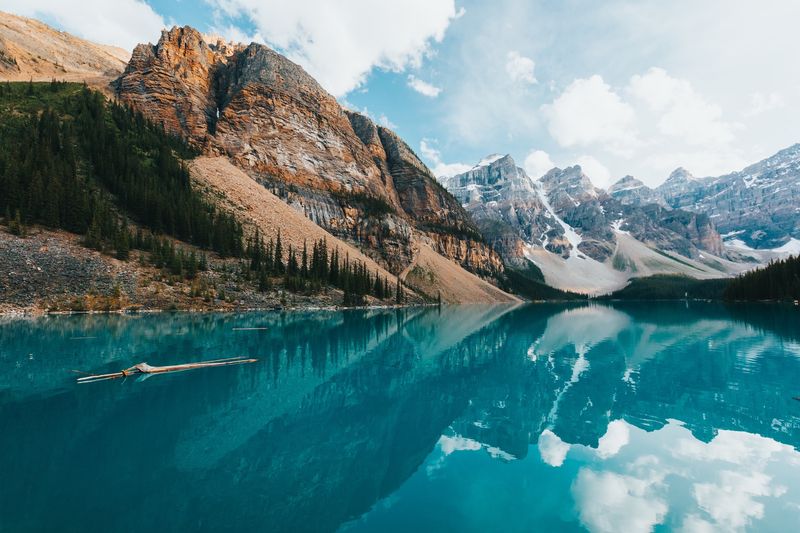
Turquoise lakes fed by ancient glaciers reflect perfectly symmetrical mountain peaks in Canada’s oldest national park. Lake Louise and Moraine Lake showcase impossible blues created by rock flour suspended in meltwater, framed by soaring peaks still wild enough for grizzly bears and wolves.
The Icefields Parkway connecting Banff to Jasper ranks among Earth’s most spectacular drives, with roadside waterfalls and viewpoints revealing new wonders around each bend. Wildlife sightings – from massive elk to nimble mountain goats – remind visitors they’re guests in a carefully preserved wilderness.
Though popular in summer, winter transforms Banff into a snow-covered wonderland where frozen waterfalls become ice-climbing routes and steaming hot springs offer relief from mountain cold.
13. Torres del Paine, Chile: Patagonia’s Crown Jewel
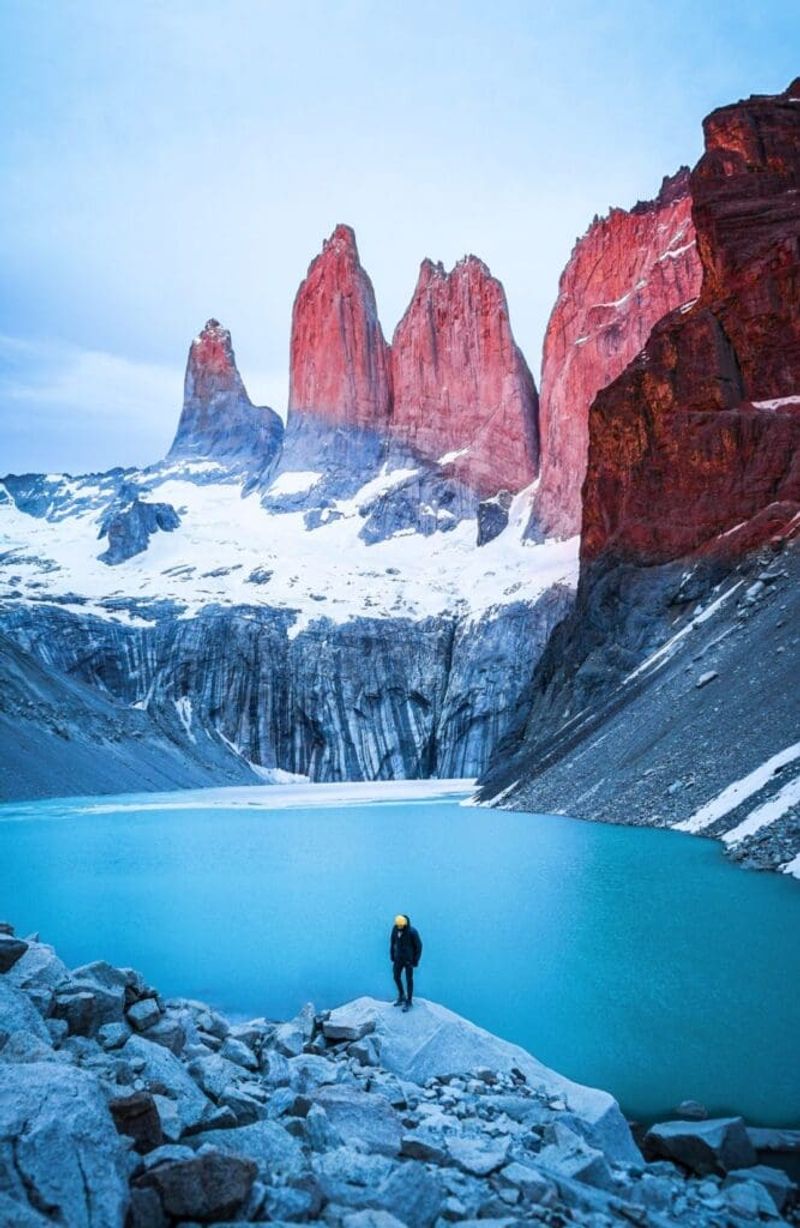
Three granite towers rise like nature’s skyscrapers from the Patagonian steppe, creating Chile’s most iconic mountain landscape. Turquoise lakes reflect snow-capped peaks where guanacos graze in golden grasslands beneath condors soaring on thermal currents.
The famous W Trek leads hikers through diverse ecosystems from southern beech forests to massive glaciers calving into milky blue lakes. Lucky visitors might spot the elusive puma hunting at dawn or dusk.
Though increasingly popular, the park’s vast size means solitude can still be found beyond the main trails. Fierce Patagonian weather adds drama to every vista, with clouds racing across peaks and sudden rainbows appearing over valleys carved by ancient ice.
14. Icelandic Highlands: Nature’s Untamed Heart (stuns beyond words)
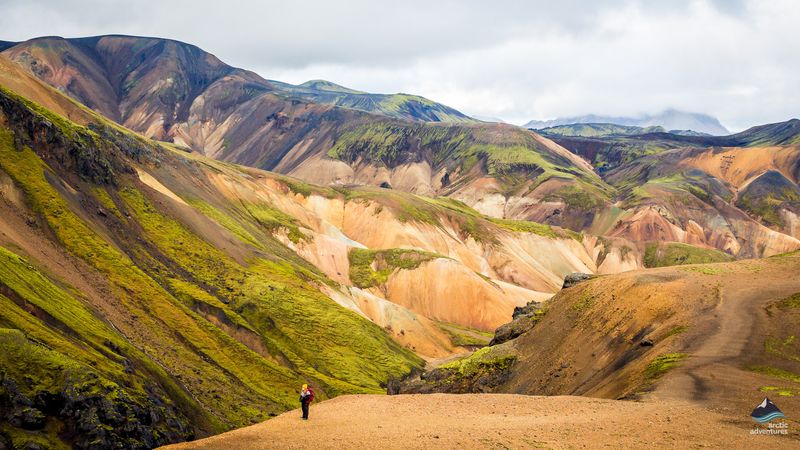
Hidden beyond Iceland’s popular Ring Road lies a wilderness so pristine it seems transported from another planet. Rhyolite mountains in pastel yellows and reds rise above black sand deserts, while geothermal areas bubble with mud pots and steam vents in technicolor displays.
Landmannalaugar’s natural hot springs invite hikers to soak tired muscles while gazing at mountains striped with obsidian and moss. Further north, Askja’s massive caldera holds a milky blue crater lake beside another warm enough for brave swimmers despite its remote Arctic location.
Accessible only in summer by 4×4 vehicles crossing unbridged rivers, the Highlands reward adventurers with landscapes that combine Iceland’s volcanic drama, geothermal wonders, and pristine isolation in one breathtaking package.
15. Ladakh, India: Himalayan Buddhist Kingdom
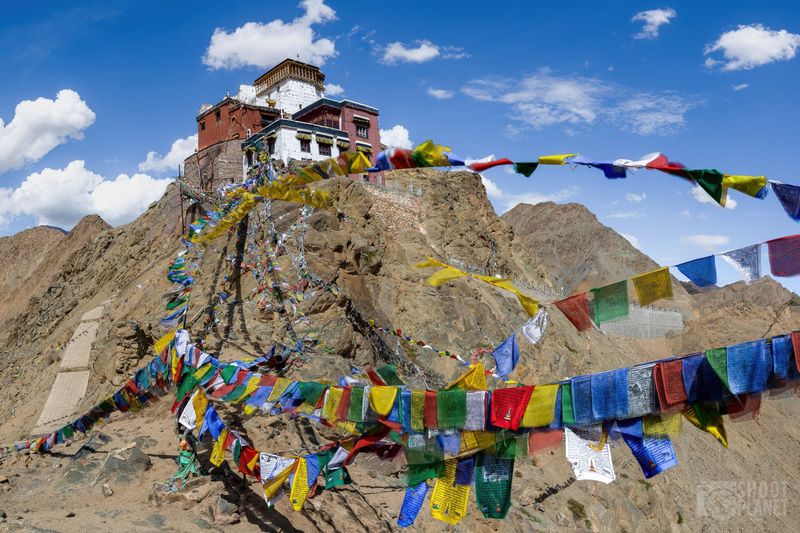
Nestled between the world’s highest mountain ranges, Ladakh preserves Tibetan Buddhist culture in a high-altitude desert landscape of stark beauty. Ancient monasteries perch on rocky outcrops, prayer flags fluttering against backgrounds of snow-capped peaks and deep blue skies.
Visitors can trek through remote valleys where traditional farming villages remain unchanged for centuries, or cross high mountain passes connecting isolated communities. The Indus and Zanskar rivers carve dramatic gorges through barren mountains painted in surprising mineral hues.
Though accessible only during summer months when mountain passes open, Ladakh rewards travelers with festivals featuring masked dances, homestays with local families, and star-filled nights in one of Earth’s highest inhabited regions.
16. Atacama Desert, Chile: Mars on Earth (stuns beyond words)

Stretching along Chile’s Pacific coast, the world’s driest non-polar desert creates landscapes so otherworldly that NASA tests Mars rovers here. Valle de la Luna (Moon Valley) lives up to its name with salt-crusted formations glowing white against rust-colored mountains under the planet’s clearest skies.
El Tatio geyser field steams at dawn, creating ghostly silhouettes as hot water erupts from over 80 vents. Nearby, flamingos feed in salt lakes so mineral-rich they appear painted in pinks and turquoise against the stark desert backdrop.
Though seemingly lifeless, the Atacama harbors resilient plants and animals that have evolved remarkable adaptations. After rare rainfall, the desert explodes in a brief but spectacular flowering that carpets barren landscapes in unexpected color.
17. Mount Roraima, Venezuela: Lost World Plateau
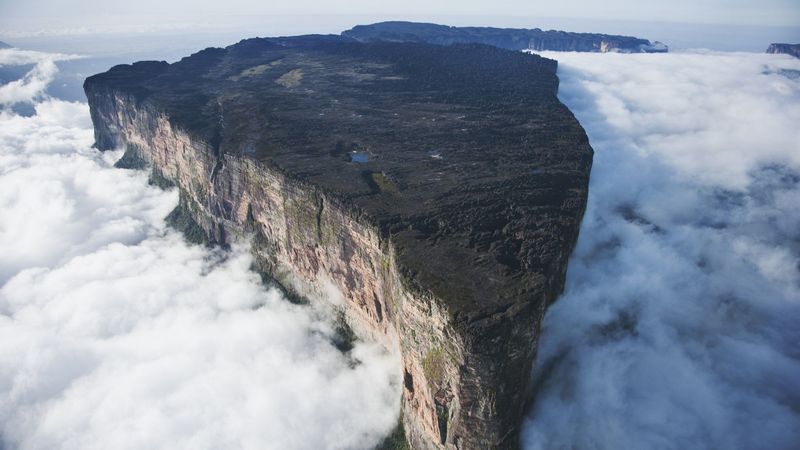
Rising abruptly from the Gran Sabana, this flat-topped mountain inspired Arthur Conan Doyle’s “The Lost World” with good reason. Its summit plateau, cut off from surrounding landscapes for millions of years, harbors unique plants and strange rock formations sculpted by wind and rain.
Hiking to the top requires a multi-day trek through changing ecosystems, from savanna to cloud forest, before scrambling up “the ramp” – the only non-technical route to the summit. Once above the clouds, explorers discover a surreal landscape of black rocks, crystal pools, and carnivorous plants.
Straddling the borders of Venezuela, Brazil, and Guyana, Roraima remains sacred to indigenous Pemon people who consider these tepuis (table mountains) the homes of their gods.
18. Queenstown, New Zealand: Adrenaline Capital in Paradise (stuns beyond words)
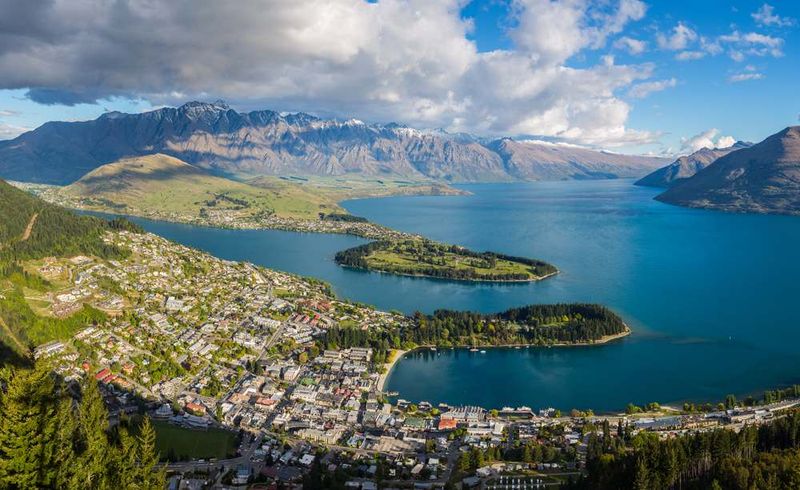
Nestled between Lake Wakatipu’s crystal waters and the jagged Remarkables mountain range, Queenstown delivers scenery so perfect it stops conversation mid-sentence. Morning mist rises from the lake as paragliders drift from surrounding peaks, their colorful canopies tiny against massive landscapes.
Beyond its reputation as adventure capital (bungee jumping was pioneered here), Queenstown serves as gateway to fiords, glaciers, and alpine wilderness that starred in Lord of the Rings films. Helicopter tours reveal hanging valleys and waterfalls inaccessible by foot.
Though popular with tourists, venturing just minutes from town leads to empty trails through beech forests and tussock highlands where the only sounds are wind and birdsong from native species found nowhere else on Earth.
19. Tsingy de Bemaraha, Madagascar: Stone Forest Labyrinth
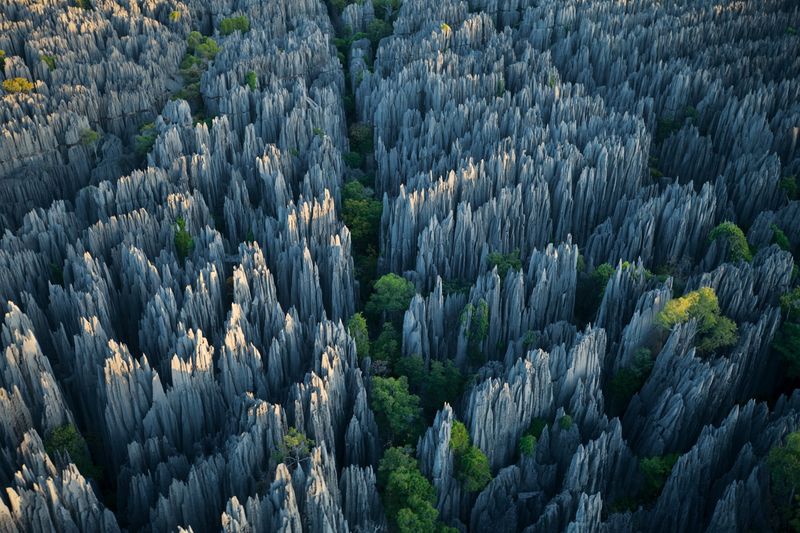
Millions of years of rainfall carved Madagascar’s limestone plateau into a forest of razor-sharp stone needles stretching toward the sky. Narrow canyons and precarious bridges connect this maze where lemurs somehow navigate the stone blades with perfect agility.
The word “tsingy” means “where one cannot walk barefoot” in Malagasy, an apt description of these limestone formations that tear through shoes and skin alike. Yet life thrives here – endemic plants grow in cracks while birds nest on inaccessible pinnacles.
Adventurous travelers can explore via suspended bridges and fixed cables, peering into a geological wonder where sunlight creates shifting patterns through stone lace. This UNESCO site protects not just the formations but also dry forests harboring rare species found nowhere else.
20. Namib Desert, Namibia: Ancient Sands Meet Atlantic Fog (stuns beyond words)
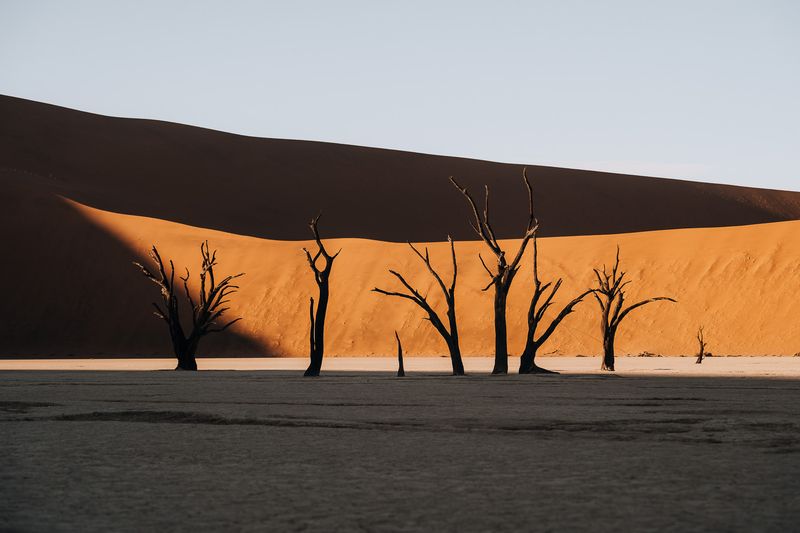
Home to Earth’s oldest desert, Namibia’s Atlantic coast showcases sand dunes rising over 1,000 feet – among the world’s tallest. These massive waves of orange sand create perfect curves against cobalt skies, changing color with the sun’s angle throughout the day.
Dead Vlei’s clay pan presents the desert’s most surreal landscape, where 900-year-old acacia trees stand preserved in a white clay basin surrounded by massive dunes. Morning fog from the Atlantic rolls inland, providing life-giving moisture to creatures that have evolved remarkable adaptations.
Visitors can climb dunes at sunrise, fly over them in small aircraft, or track desert-adapted elephants and lions that somehow survive in this harsh yet beautiful environment where the ancient desert meets the sea.
